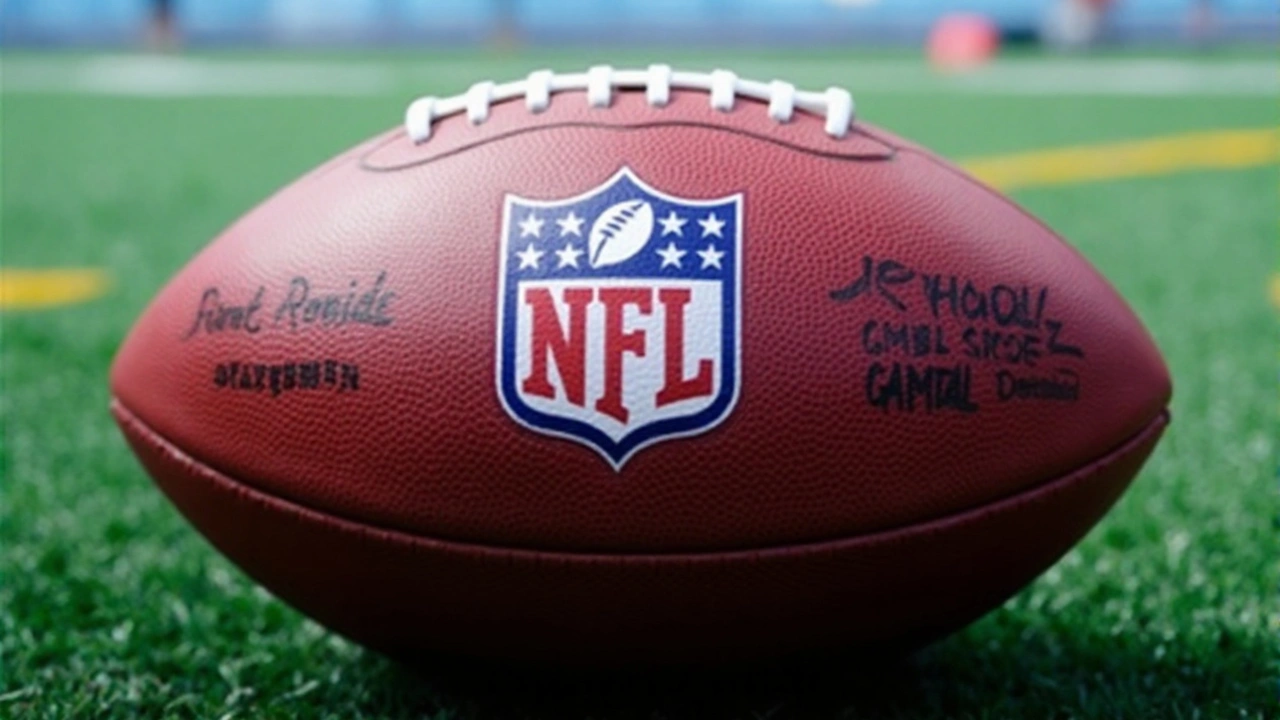Fourth-quarter flip: McCarthy’s first test
Down 17-6 after a 74-yard pick-six, the Minnesota Vikings handed the ball to a quarterback who hadn’t taken a regular-season NFL snap. J.J. McCarthy didn’t blink. In his debut, the 10th overall pick rallied Minnesota to a 27-24 win over the Chicago Bears on Monday night, turning a rattled start into a poised, ruthless finish.
The night swung after Chicago corner Nahshon Wright jumped a throw and raced the other way for a third-quarter touchdown. The Bears sideline erupted. The Vikings looked flat. At halftime, head coach Kevin O’Connell told his young starter, “You are going to bring us back to win this game.” It sounded like encouragement. It turned out to be a script.
McCarthy’s fourth quarter came fast and clean. He first found Justin Jefferson on a 13-yard strike in the red zone, a simple, confident throw that reset the tone even as the two-point try failed. A few snaps later, the Vikings needed just three plays to take the lead—McCarthy ripped a 27-yard touchdown to Aaron Jones, then hit Adam Thielen for the conversion to go up 20-17 with 9:46 left.
The dagger came on the ground. With the Bears bracing for a handoff, McCarthy sold the fake, kept it, and sprinted 14 yards for a touchdown. That made it a two-score game and turned a nerve-heavy debut into a statement. Chicago answered with a 65-yard march capped by Caleb Williams’ one-yard toss to Rome Odunze, but Minnesota’s defense closed it out in the final minutes.
Context matters here. This was McCarthy’s first meaningful football since he guided Michigan past Washington to win the national championship at the end of 2023. A knee injury wiped out his rookie year. The transition from no reps to winning time against a division rival isn’t supposed to look this composed. O’Connell said he felt his quarterback’s poise from the opening series, even as the mistakes piled up. The fourth quarter proved him right.
For Chicago, the night was a study in first steps under new head coach Ben Johnson. Williams flashed what the Bears drafted him for—his pace, his quick trigger, his poise in tight spaces. He scored on the ground, threw a late touchdown, and moved the ball when they needed urgency. But miscues and a defense that couldn’t close on the road cost them a divisional game they once led comfortably.
Rivalry-wise, this keeps Minnesota’s grip tight. The Vikings have now taken eight of the last nine in the series. That kind of run doesn’t happen by accident. It’s been built on situational edges—two-minute execution, red-zone calls, and late-down composure. On Monday, all three tilted purple when it mattered.

What changed: play-calling tweaks, turning points, and what it means next
Early on, the Bears’ plan worked. They crowded first reads, took away rhythm throws, and baited a risky ball that Wright turned into seven points. Chicago’s front muddied the pocket. The Vikings’ drives stalled. Then O’Connell shifted gears.
Minnesota leaned into tempo and definition—quicker concepts, half-field reads, and a moving launch point to calm the rush. The ball came out faster. Shots came off play-action and layered routes that gave McCarthy clean windows. Those tweaks didn’t just help the rookie; they opened space for Jefferson and kept Chicago from sitting on the same looks.
Jefferson’s touchdown was a small thing with a big effect. It settled the sideline and gave McCarthy a high-confidence throw inside the numbers. Jones’ scoring catch showed timing and trust—hit the landmark, throw on time, let the back do the rest. The keeper for the rushing touchdown? That was O’Connell telling his quarterback, you can be a closer with your legs, too.
If you’re tracing the night by pressure points, it looked like this:
- Wright’s 74-yard interception return: the gut-punch that put Chicago up 17-6 and put McCarthy under the spotlight.
- Jefferson’s 13-yard touchdown: the reset. No panic, just a clean completion in a money quadrant of the field.
- Three-play go-ahead drive: the “we’re fine” sequence—27 yards to Jones, conversion to Thielen, Vikings lead with 9:46 to go.
- McCarthy’s 14-yard keeper: the one that said this isn’t just a rescue; it’s a takeover.
- Williams to Odunze: a late Bears answer that forced Minnesota to close, not coast.
None of this happens without Minnesota’s defense getting off the field late. After surrendering that long Chicago drive, the Vikings bowed up, tackled in bounds, and refused to give away cheap yards over the top. The kind of November-and-December football O’Connell wants—smart, disciplined, durable—showed up in Week 1.
There’s also the human layer. McCarthy spent a year rehabbing, learning an NFL offense from the sideline, and hearing about what he wasn’t yet. Monday wasn’t flawless. It didn’t need to be. He answered the basic question every rookie quarterback faces: can you function when a game turns messy? By the fourth quarter, he was speeding it up, not melting down.
For Williams, the signs are promising. He found throws outside structure, bought time without bailing on the pocket, and punched in a short-yardage score. The connection with Odunze—quickly tested in the red zone—got reps under stress. Johnson’s offense schemed answers, and there were stretches where the Bears dictated terms. But slippage after the turnover, too many short fields conceded, and second-half adjustments they couldn’t match flipped the outcome.
How repeatable is McCarthy’s finish? The style can be. Expect more tempo, more defined reads early, and a steady diet of play-action that keeps him out of obvious passing downs. Expect Jefferson to stay the first read until defenses force the ball elsewhere. And expect Jones to be more than a back—his route tree changes what Minnesota can call on third down and in the red zone.
One more thread: situational courage. Going for two after the Jones score wasn’t reckless; it was math. Stretch the margin, tilt the next Chicago possession, and put the rookie on the front foot. The play to Thielen worked because the call matched the moment—quick, decisive, low-risk throw to a veteran who wins on leverage.
Zoom out and the schedule adds spice. Minnesota returns home to face the Atlanta Falcons in Week 2. That’s another test of composure against a defense built to squeeze early reads. O’Connell won’t want to live in fourth-quarter heroics every Sunday, but he now knows his rookie can stomach them. Chicago heads to Detroit to face the defending division champs. For Johnson and Williams, it’s a chance to turn progress into a result—and to tighten the screws on late-game execution that slipped here.
Rivalries don’t make seasons, but they set tone. The Vikings just told the division they’re willing to ride with a young quarterback in heavy weather. The Bears showed enough under a new coach and a rookie passer to believe the ceiling is higher than the scoreline. On opening night, that was the difference: one team finished its surge; the other left the door cracked. Minnesota walked through.
If you came for numbers, the headline ones are simple: two touchdown passes, one rushing score, a double-digit fourth quarter on the road to flip a game most teams lose. If you came for signals, the bigger takeaway is calmer—process over panic. McCarthy didn’t win with elite arm talent or some wild trick play. He won by stacking routine throws, letting his play-caller buy him answers, and picking the right moments to use his legs.
That travels. That holds when the pocket gets noisy in November. And that, for the Vikings, is why the first night with their new quarterback mattered more than the box score ever will.

Write a comment